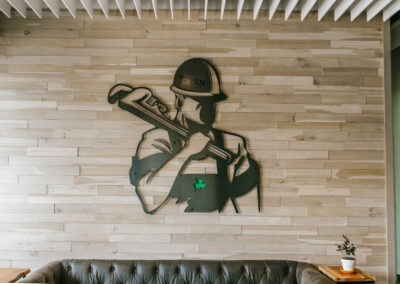
Property owners and managers hope their fire sprinkler systems never activate. However, if your sprinkler system is called into action in the event of a fire, you need to ensure the system is free of blockages and ready to function properly. The 5-year internal fire inspection ensures there is nothing in the piping that would affect water flow. Some possible pipe obstructions include slime, rust, corrosion, or other foreign materials such as rocks. The requirement for this inspection every 5 years may seem excessive, but buildup from corrosion can occur surprisingly quickly. Therefore, the NFPA (National Fire Protection Association) mandates sprinkler systems are inspected every 5 years. The most common remedy if piping obstructions are found is a system flushing.
According to NFPA 25, there are three levels of internal pipe inspections:
- Internal Pipe Inspection: this requires the opening of a flushing connection at the end of one main and removal of one sprinkler head near the end of a branch line. These openings are to be inspected for the presence of foreign material.
- Internal Pipe Examination for ‘At-Risk’ Systems: NFPA 25 lists conditions in which this type of internal pipe exam is to be performed. This inspection requires internal pipe examinations at the following four points of a fire sprinkler system:
- System Valve
- Riser
- Cross Main
- Branch Line
- Obstruction Investigation: This is a more thorough inspection if material is found during an internal pipe inspection. NFPA 25 provides the requirements for conducting obstruction investigations.
For more information about 5-year internal sprinkler inspections or what needs to occur in the event obstructions are discovered, contact Ryan Fireprotection.

